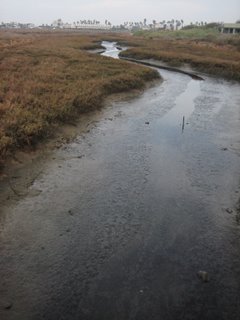 WildBird
WildBird proudly offers a Canon EOS 30D digital camera as the grand prize this year.
To become eligible for it and one of the other prizes shown on page 41 of the March/April issue, follow these rules very carefully. A panel of judges will choose three winners from each of the five categories -- amateur, backyard, digiscoping, flight, water birds -- plus one grand-prize winner.
The entry form appears on page 39 of the March/April issue. The form will not appear online. If you don't receive
WildBird in your mailbox, then ask for the March/April issue at a local Wild Birds Unlimited or Wild Bird Centers of America or a national bookseller.
Official Contest Rules
* All entries must be postmarked by April 28, 2007.
* This photo contest is open to everyone except employees of
WildBird and BowTie, Inc.
* Each contestant may enter up to two photographs per category.
* Each participant confirms that each entry has not been published in another commercial publication for payment or offered online for sale. Similar in-camera duplicate photos are not eligible.
* Each contestant agrees to allow
WildBird to post one entry on the magazine's website, without compensation, to promote the contest.
* One grand-prize photo will be selected from all the contest entries.
* Color 35mm slides, 21Ú4-inch transparencies, prints at least 6x8 inches but no larger than 8x10 inches, and digital files will be accepted. Do not send duplicate or glass-mounted slides.
* Digital files must arrive on compact discs, one image per CD.
* In order to be suitable for publication in
WildBird, digital files must be 300 dpi; at least 6x8 inches in size; TIFF, EPS or SHQ JPG format; RGB; and 8 bit. A high-quality 6x8-inch print must accompany each CD.
* Due to the constraints imposed by early digital cameras used in digiscoping,
only entries in the
digiscoping category may possess a print size of
5x7 inches and arrive with a 5x7-inch high-quality print.
* Only photos of native species photographed in the United States and Canada are eligible for the amateur, digiscoping, flight, water birds and backyard categories.
* To write the captions, we need
the story behind the photo. Give us interesting details about how you attracted the bird to your yard or how you observed the bird in the field.
* The
amateur category is open to individuals who have not won a prize in a previous
WildBird photo contest and have not received payment from
WildBird for the publication of an image.
* All
backyard photographs must be taken in a yard;
show a feeder, birdbath or nestbox; and include species regularly seen at those features. Photos taken at wildlife refuges, parks, sanctuaries and commercial lodges are not eligible.
* All
digiscoping entries must cite the spotting scope and eyepiece used to create the image.
* All
flight photos must convey the essence of avian flight. Motion and focus will be primary considerations.
* Entries for the
water birds category should feature only shorebirds, wading birds, waterfowl and seabirds.
* All birds photographed for this contest must be alive and living in the wild. Controlled studio portraits, photos of captive birds and "posed" birds -- especially nestlings -- will not be accepted.
* Each entry must be submitted
separately -- one entry per envelope.
* Write the entry's
category on the front, lower-left area of the envelope.
* Every image must arrive with a separate, completed entry form. Photocopies of the form are acceptable.
* Do not use staples or paper clips; they can scratch your photos.
WildBird is not responsible for lost or damaged slides.
* If you want your
slides and
transparencies returned,
each entry must arrive with a self-addressed, stamped envelope. Provide ample postage in addition to a return address on each envelope. Prints and CDs will not be returned.
* Due to the volume of submissions, the staff will
not make exceptions to these rules. Please follow them carefully to avoid disqualification.
* Winners will be selected by a panel of judges and the
WildBird staff.
* Winners will be notified by mail; do not call or send an e-mail.
* Winning images will be published in the September/October 2007 issue and may be used in advertising and marketing of
WildBird without compensation.
* All slides and transparencies will be returned in October. No prints or CDs will be returned.
Good luck!
 Are you polishing your 500-word fictional piece about birds, birders or birding? I look forward to receiving your creative entries for the March edition of First Friday.
Are you polishing your 500-word fictional piece about birds, birders or birding? I look forward to receiving your creative entries for the March edition of First Friday.




























